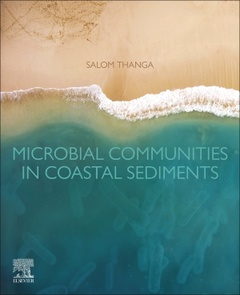Description
Microbial Communities in Coastal Sediments
Structure and Functions
Authors: Vincent Salom Gnana Thanga, Jennerjahn Tim C., Ramasamy Kumarasamy
Language: English
Subjects for Microbial Communities in Coastal Sediments:
Keywords
Microbes; Ocean; Ecology; Pollutants; Biogeocycling; Green house gas; communities; nutrients; carbon; Microbiology
146.54 €
In Print (Delivery period: 14 days).
Add to cart206 p. · 15x22.8 cm · Paperback
Description
/li>Contents
/li>Readership
/li>Biography
/li>Comment
/li>
A concise reference on the structural composition and function of microbial communities in coastal environments, especially in relation to natural and anthropogenic impacts.
Microbial Communities in Coastal Sediments presents twenty years of coastal microbiology research, grounding it as a vital development in the field of microbial ecology. It is the first book to focus exclusively on the complex microbial ecology and its function in rest of the marine environment. The book outlines the structure, function, and assessment of microbial communities in marine sediments while exploring practical methods of assessment. It is an invaluable resource to aquatic microbiologists, marine ecologists, marine microbiologists, aquatic researchers, and graduate students in this field.
Microbial Communities in Coastal Sediments begins with an examination of nutrient sources in the coastal context with a focus on organic matter inputs. The quantity and quality of organic matter in coastal sediments and their impacts on the composition and formation of microbial communities is discussed. The book explores the consequences of anthropogenic changes and human activity on microbial ecology and nutrient cycling. Sections on nutrient availability, green house gas production and biodegradation of persistent organic pollutants provide essential details. Molecular research techniques and methods for assessing microbial community structure and function in coastal sediments are also covered.
Primary Audience: Aquatic Microbiologists, Marine Ecologists, Marine Microbiologists, Aquatic researchers and scientists
Secondary Audience: Scientists at pharmaceutical and biotech companies
Tim Jennerjahn is a Senior Scientist and head of the working group “Ecological Biogeochemistry at the Leibniz Centre for Tropical Marine Research in Bremen, Germany. Dr. Jennerjahn trained in geology and biogeochemistry at the University of Hamburg. His research focuses on the biogeochemical response of coastal aquatic systems to environmental change. He coordinates and participates in collaborative interdisciplinary research projects in Indonesia, India, Brazil, China, and Vietnam, and has conducted numerous expeditions. His research has been published in various journals and books. He currently teaches at the University of Bremen and in partner universities abroad, where he serves as thesis supervisor for students from Europe, South America, Africa and Asia. He is also an Editor-in-Chief of the international journal Estuarine, Coastal and Shelf Science.
Kumarasamy Ramasamy, former Vice-Chancellor of Tamil Nadu Agricultural University, did his Masters in Fermentation Technology and
Doctorate in Industrial Microbiology at Catholic University of Leuven, Belgium, where he also obtained post-doctoral experience in Electron
Microscopy. Dr. Ramasamy gained additional experience in Gene Cloning at Michigan State University, USA. Dr. Ramasamy is one of the few specialists in the area of microbial ecology, espe
- Explores the interplay of physicochemical and biological features of coastal ecosystems on microbial community composition to provide a template of comparison for field research
- Includes unique figures, schematic diagrams and photographs related to microbial processes of coastal ecosystem to clearly represent different aspects of microbial structure and functions
- Provides analytical methods and detailed molecular techniques for qualitative and quantitative analyses of microbial community structure




